As the weather turns colder in parts of the country, wreaking havoc on roads, chances for tire damage or irregular tire wear to occur become more prevalent. New GM vehicles include a new vehicle tire warranty that is included with the Bumper-to-Bumper New Vehicle Limited Warranty. (Fig. 15) But what tire conditions are covered or not covered under warranty?
Defective tires will be replaced on a pro rata adjustment basis based on the mileage on the tire. Proration applies to the cost of the tires only. Customers are not assessed any labor charges for tire replacement (mount and balance).
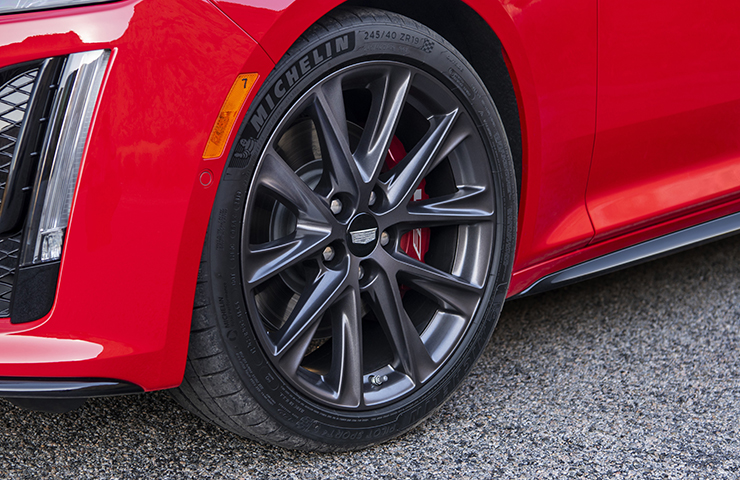 Fig. 15
Fig. 15
Tire Wear
Tire wear varies based on the tire type on the vehicle and customers’ driving habits. Original Equipment (OE) tires installed on GM vehicles are evaluated for many different criteria, including handling, ride quality, load carrying and traction. Different types of tires will experience different rates of tread wear. Uneven or irregular wear from damaged, worn or misaligned suspension components (Fig 16) may be covered if tire replacement is necessary due to components covered under the New Vehicle Limited Warranty. Replacement tires must be claimed on the same job card as the defective components. A Tire Pre-Repair Authorization is required for the tire labor operation.
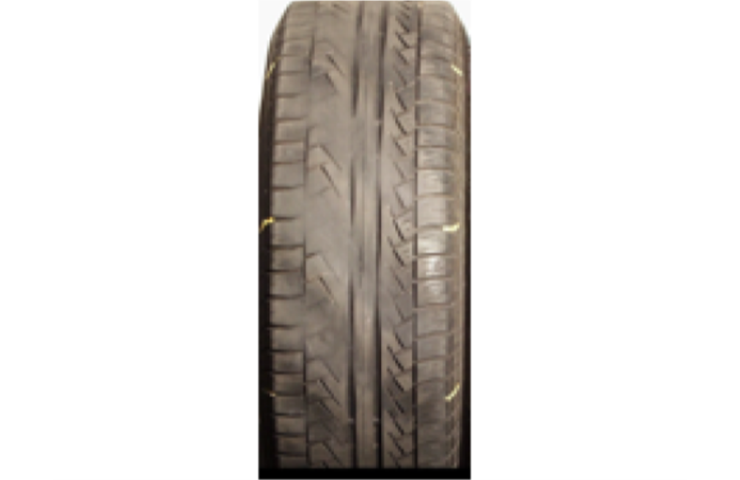 Fig. 16
Fig. 16
Non-warrantable tire wear conditions include damage from:
- Road hazards
- Driving with low tire pressure
- Improper tire repairs
- Extended driving on a flat tire
- Misuse, racing or vandalism
- Lack of maintenance
- Flat spotting caused by parking a vehicle for an extended period of time
- Cold weather cracking on high performance summer tires
- Normal tire weathering
Inspection of tires replaced under warranty reveals that the most frequent non-warrantable condition claimed is road hazard, followed by improper wear. Here are some examples of returned tires with non-warrantable conditions.
Road Hazard – Tire with an air leak caused by a tire plug installed in a non-approved portion of the tire. (Fig. 17)
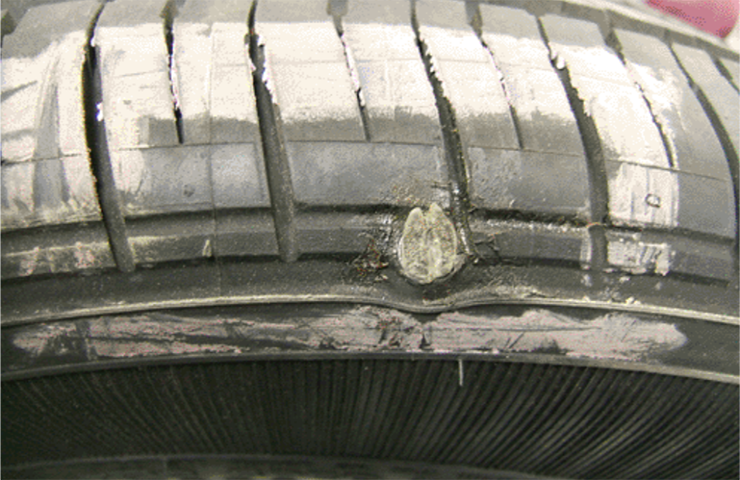 Fig. 17
Fig. 17
Driving with Low Tire Pressure – Inside view of a tire shows shredding caused by extended driving with low air pressure. (Fig 18) Interior tire damage may not be obvious on the exterior.
TIP: Remind customers to pay attention to an illuminated low tire pressure warning lamp on the instrument cluster and to follow recommended tire maintenance. Many GM models feature the Tire Fill Alert system that works with the Tire Pressure Monitoring System to provide visual and audible alerts outside the vehicle when inflating a tire to the recommended tire pressure.
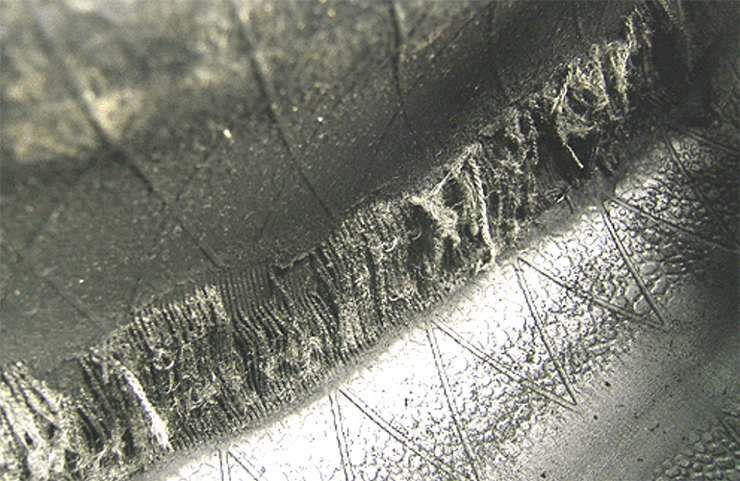 Fig. 18
Fig. 18
Extended Driving on a Flat Tire – Tire sidewall wear completely around the tire is due to extended contact with the road when the tire was completely flat. (Fig. 19)
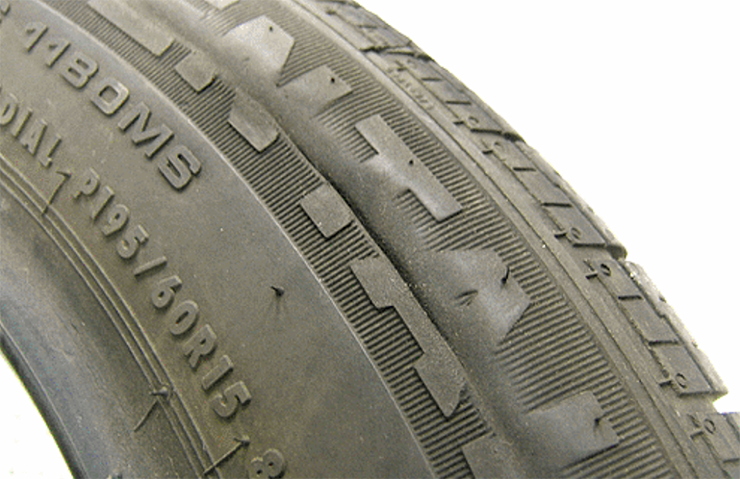 Fig. 19
Fig. 19
Normal Tire Weathering – Superficial tire cracking is an example of normal tire weathering. (Fig. 20)
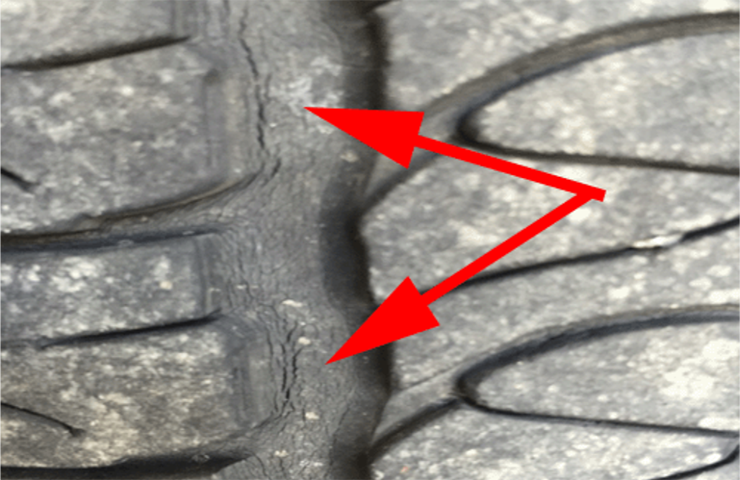 Fig. 20
Fig. 20
Tire Sealant and Inflator Kits
GM’s endorsement of the temporary use of tire sealant (as supplied with a GM inflator kit) may differ from individual tire manufacturers. GM has validated the temporary use of tire sealant for air leaks and, when used according to the instructions in the vehicle Owner’s Manual, will cover the tire under the New Vehicle Limited Warranty.
Only tire sealant included with GM inflator kits should be used for temporary repair of tire air leaks. GM has tested this sealant and its compatibility with on-wheel-mounted tire pressure sensors. After inflator kit use, the wheel-mounted tire pressure sensor should be inspected for any damage and replaced or cleaned as needed.
Tires Covered Under Warranty
Original Equipment (OE) tires and Limited Product Option (LPO) tires installed during Pre-Delivery Inspection (PDI) are covered under the New Vehicle Limited Warranty. Tires replaced under warranty are covered for the remaining portion of the New Vehicle Limited Warranty.
Non-OE tires, tires on a vehicle after the New Vehicle Limited Warranty expires, and tires purchased by customers beyond the New Vehicle Limited Warranty are not covered. OE tires may still have prorated warranty coverage by the tire manufacturer once the New Vehicle Limited Warranty expires.
For additional information, including steps to complete tire warranty transactions as well as how to contact the GM Tire Program, refer to Bulletin #20-NA-159.
– Thanks to Tom Holecek and Scott Lewiston


















